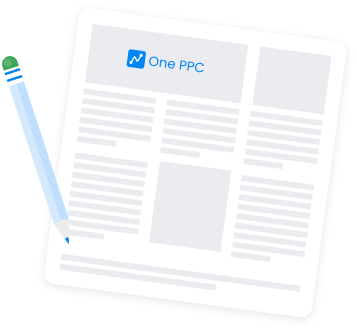Welcome to our advertising blog, where we share the latest best practices by blending manual strategies with automation and AI-driven innovation

In today’s fast-paced digital advertising landscape, accurately tracking and measuring conversions is more important—and more challenging—than...
In the fast-paced realm of online advertising with Google Ads, the ability to precisely track the...
In the early days of Google Ads, manual campaign management gave advertisers granular control over every...
In today’s digital age, the efficiency and effectiveness of advertising campaigns are more crucial than ever....
Enter your best details below and stay updated.
Data Studio is a great free reporting tool for online marketing. It can also work with...
In the fast-paced world of digital advertising, maximising return on ad spend (ROAS) has become a...
In the competitive world of digital advertising, where efficient budget allocation and measurable outcomes are paramount,...
In the fast-evolving world of digital advertising, success depends on more than just generating conversions—it’s about...
In the complex landscape of B2B marketing, the primary aim of digital advertising campaigns through platforms...
In the intricate dance of digital marketing, understanding the terms “branded terms” and “competitor terms” is...
In the digital marketing world, understanding the path your customers take from viewing an advertisement to...
Change is the only constant in today’s rapidly evolving digital marketing landscape. Staying up to date...
In the competitive landscape of digital marketing, the ability to capture and analyse detailed customer transaction...
In the evolving landscape of digital marketing, the integration of payment processing with advertising platforms is...
In today’s competitive digital advertising landscape, increasing leads while retaining quality is a critical challenge for...
In today’s digital landscape, data is king, and leveraging it effectively can make or break your...
In today’s digital landscape, data is king, and leveraging it effectively can make or break your...
In today’s digital landscape, data is king, and leveraging it effectively can make or break your...
In today’s digital marketing landscape, LinkedIn Ads has emerged as a powerhouse for generating valuable leads...
Google Audience Manager is a powerful tool designed to help marketers and advertisers engage with the...
In the dynamic world of digital marketing, Facebook has evolved from traditional pixel-based tracking to a...
Generative AI is the latest way to improve the management of Google Ads campaigns for businesses...
In today’s fast-paced digital advertising landscape, accurately tracking and measuring conversions is more important—and more challenging—than...
In the early days of Google Ads, manual campaign management gave advertisers granular control over every...
In the AI-driven realm of Google Ads, the quality of your leads can significantly impact the...
In today’s data-driven marketing landscape, understanding the impact of your advertising efforts on revenue generation is...
LinkedIn Ads can be improved by using a combination of automation and AI to better achieve...
By leveraging Zapier, you can improve Facebook Ads audience targeting, boost lead quality, and enhance lead...
As digital marketing evolves, advertisers are continually seeking more refined methods to improve the quality of...
In the ever-evolving landscape of digital marketing, understanding the true impact of your advertising efforts is...
In today’s data-driven marketing landscape, accurately measuring the success of your advertising efforts is crucial. While...
LinkedIn Ads have proven to be an essential tool for businesses targeting a professional audience. However,...
Google Ads online conversion tracking is essential for online advertising, but what if your business relies...
To maximise the effectiveness of your Google Ads campaigns, it’s essential to understand and strategically employ...
In an era where every click counts, getting the most out of your Google Ads campaigns...
As the digital marketing landscape shifts towards greater privacy and data protection, the reliance on third-party...
In the competitive realm of Google advertising effective keyword targeting is crucial for driving search engine...
In today’s digital age, the efficiency and effectiveness of advertising campaigns are more crucial than ever....
In the intricate landscape of digital advertising, precision is the linchpin for success. For businesses navigating...
In today’s competitive digital landscape, mastering LinkedIn Ads is pivotal for any business aiming to enhance...
In the ever-evolving realm of digital marketing, a transformative synergy has emerged – the fusion of...
In today’s digital landscape, mortgage brokers are swiftly moving to online advertising to bolster their outreach,...
Are you ready to take your analytics game to the next level with Google Analytics 4...
LinkedIn, the world’s largest professional network with over 700 million users, offers B2B marketers unparalleled opportunities...